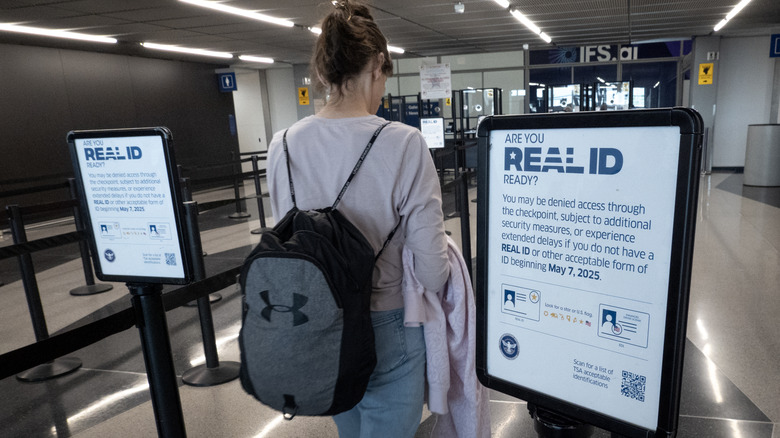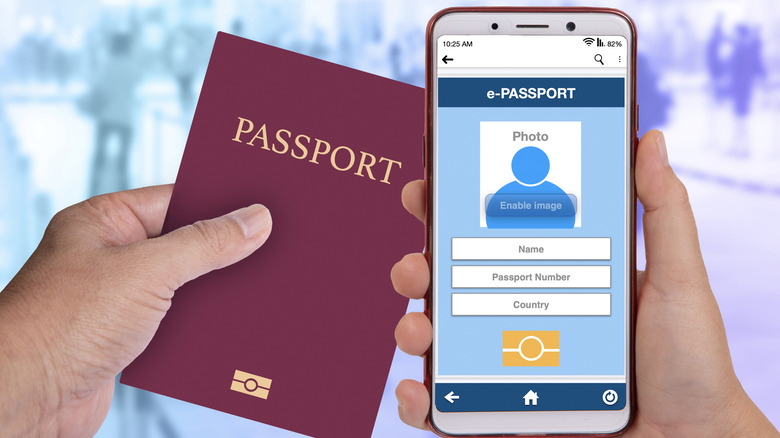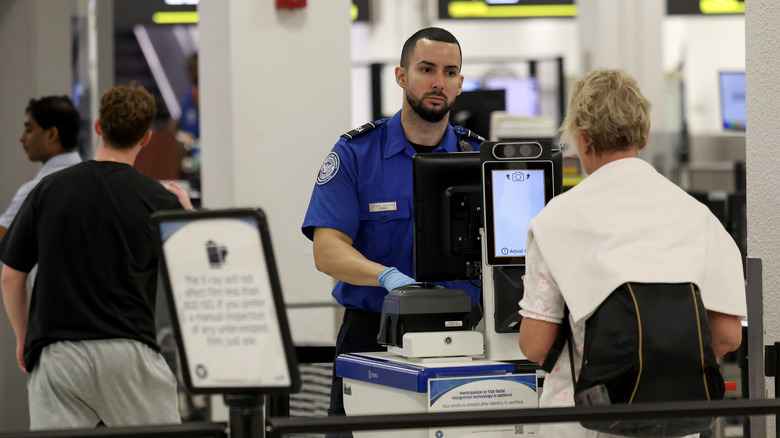Do You Still Need Physical ID For TSA If You Have A Digital ID?
Digital IDs in mobile wallets and apps are becoming more commonplace. You can add everything from your driver's license to your school or work ID, or even a passport, to a mobile device. Pull it up on screen, scan it, or show it to an agent or guard to verify your identity and gain entry.
Does this mean you can leave your physical ID at home? Not necessarily. While you might not need to show it, it's important that you still have it on you, just in case. If you're asked for it and you don't have it, this could lead to additional screenings, delays, and, in a worst-case scenario, denied entry into a state or onto a flight.
The ability to present digital IDs as a form of ID depends on location, but they are accepted in a growing number of places. This includes the Transportation Security Administration (TSA), which is now accepting digital IDs loaded onto an Apple Wallet, Google Wallet, Samsung Wallet, or other state-issued apps as a form of personal identification. These IDs are accepted at more than 250 airport checkpoints.
How to set up and use a digital ID
When using a digital ID on an Android phone or Apple iPhone, the TSA agent will only see the information that is necessary for them to identify that you are who you say you are. This can help speed up travel, reducing wait times and annoyingly long line-ups.
It's easy to sign up and load the ID into a TSA-approved digital wallet on your mobile phone or tablet. This can include a state-issued REAL ID-compliant or Enhanced Driver's License (EDL) or driver's license or other accepted ID card, like an Enhanced ID (EID), U.S. passport or passport card, DHS trusted traveler card, U.S. Department of Defense ID, permanent resident card, border crossing card, Veteran Health Identification Card (VHIC), and a few other accepted forms of identification.
If you present this in digital form, the TSA agent may take a facial scan and compare it to the one on the digital ID. The photo is optional, and it is deleted once your identity is verified. The TSA confirms that your image is never used for law enforcement, surveillance, or shared with others.
Why you still need your physical ID
We're well into a digital world, but physical back-ups are still necessary, and that includes your ID as well. Even with a digital ID, you still need your physical ID in case an agent requests it as a secondary form of verification. It's also useful if your phone dies or becomes lost, or is damaged.
Further, not all states accept all forms of digital ID. If you don't verify eligibility beforehand, you might have a digital ID that a state does not accept. For example, Arizona, Colorado, and Georgia all accept Apple Wallet, Google Wallet, and Samsung Wallet digital IDs, while Hawaii, Ohio, and Puerto Rico are only set up to accept Apple Wallet.
Certain locations only accept a specific form of digital ID. In Utah, for example, you must use a digital ID in the GET Mobile app. Digital IDs will likely expand over time, but for now, use a digital ID as a primary method and a physical ID as a backup. You may never be asked to show your physical ID. But knowing you have it on you upon request, and that the TSA can ask for it as part of its ever-changing rules, will provide you peace of mind and hopefully a smoother trip.


